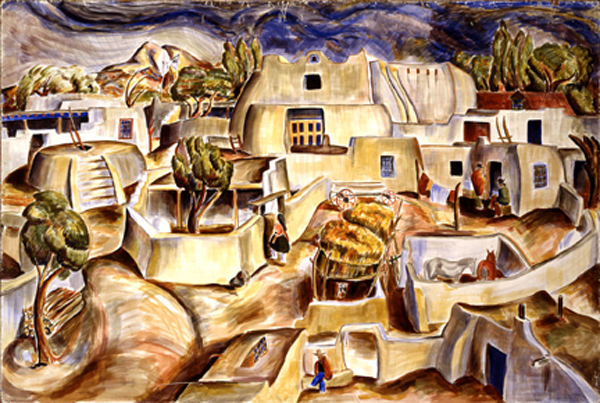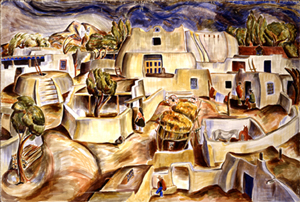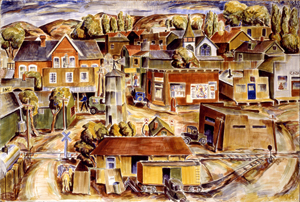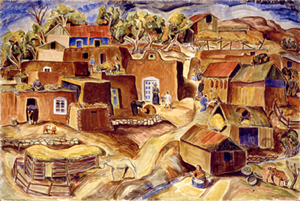
Indian Village, 1934
William Lumpkins (American, 1909 - 2000)
watercolor and pencil on board with plaster, 48 x 72 1/2 x 1 in. (121.9 x 184.2 x 2.5 cm)
On long term loan to the New Mexico Museum of Art from the Fine Arts Program, Public Buildings Service, U.S. General Services Administration
2007.6.1
William Lumpkins was born on the Rabbit Ears Ranch in Clayton, New Mexico. His early education came from a tutor who instilled a lasting interest in Zen Buddhism in the young artist. When his education moved him to Roswell in 1924, he met Peter Hurd, and the two young artists spent much time sketching together with Hurd coaching Lumpkins in his early efforts. Lumpkins' abstract work began in early 1930, inspired by a group of watercolors by John Marin. When Lumpkins moved to Santa Fe in 1935, he met Raymond Jonson and became involved with the Transcendentalist Painting Group committed to the philosophy that one achieved artistic fulfillment by going beyond sense experience into spiritual realms. Lumpkins, a key figure in the Santa Fe art community as both artist and architect, was also a pioneer of passive solar architecture and founded the Santa Fe Art Institute in 1985.
| For the full image, click on the Indian Village (left) or Anglo Village (center) | ||
   |
||
